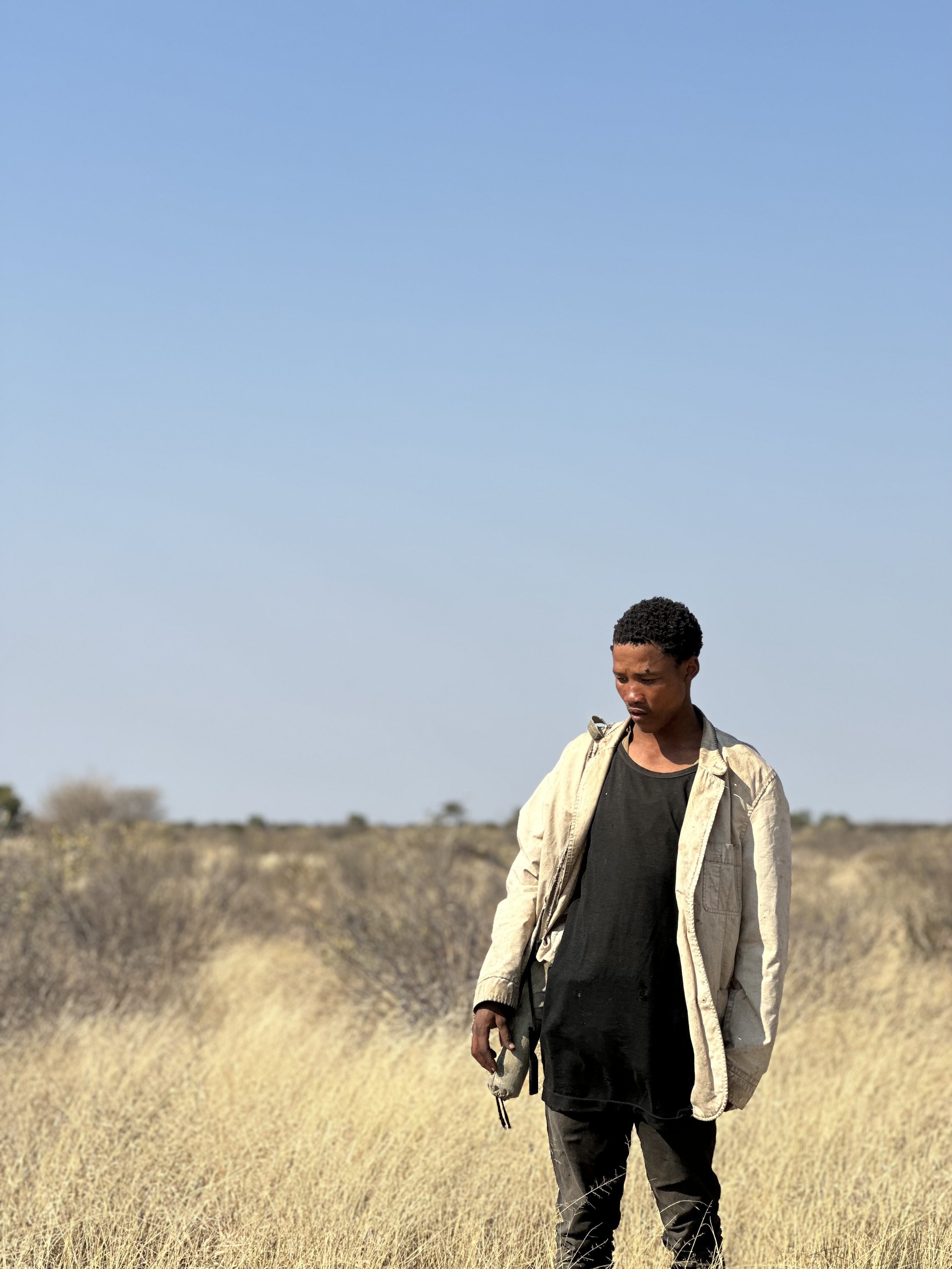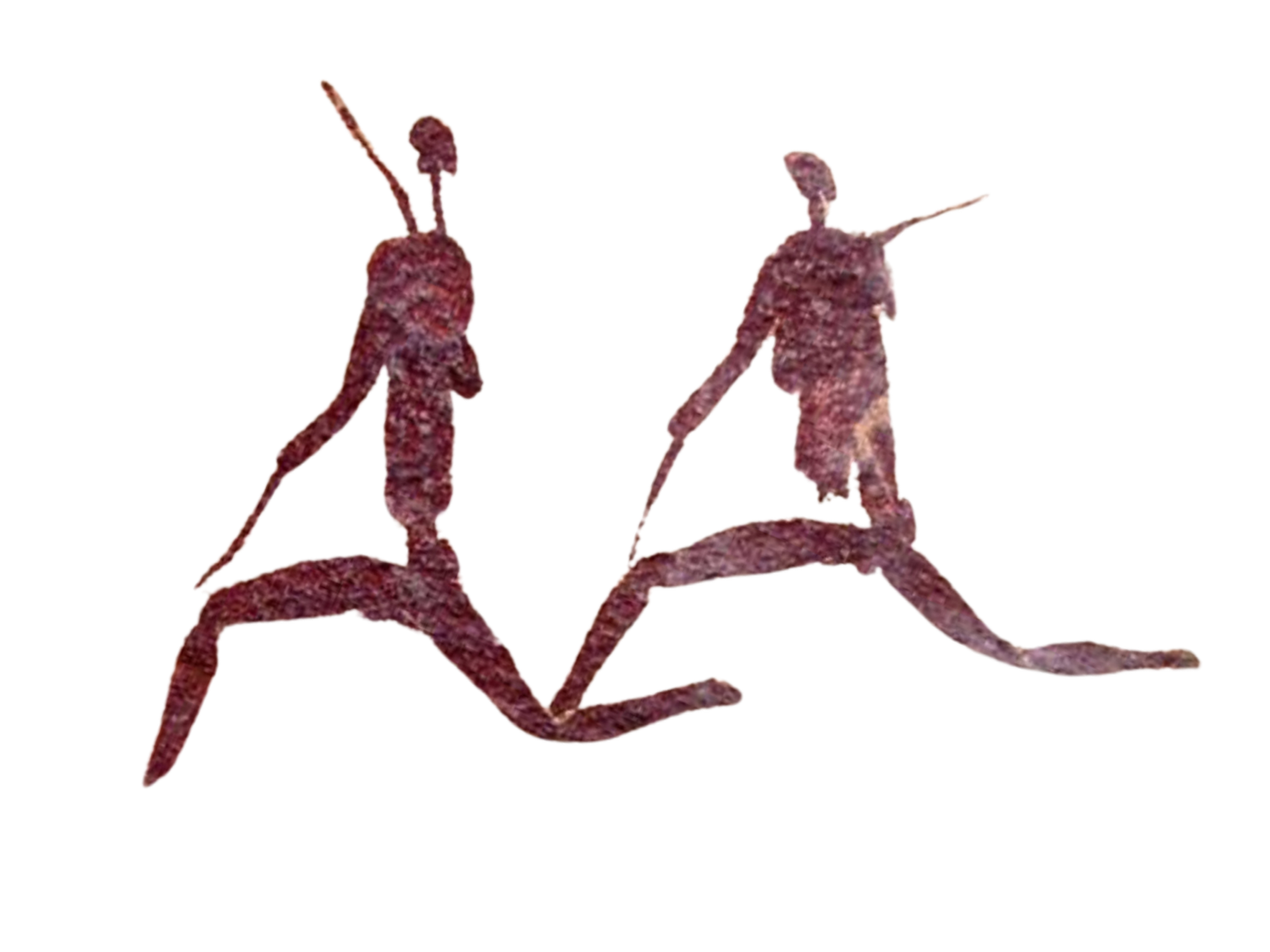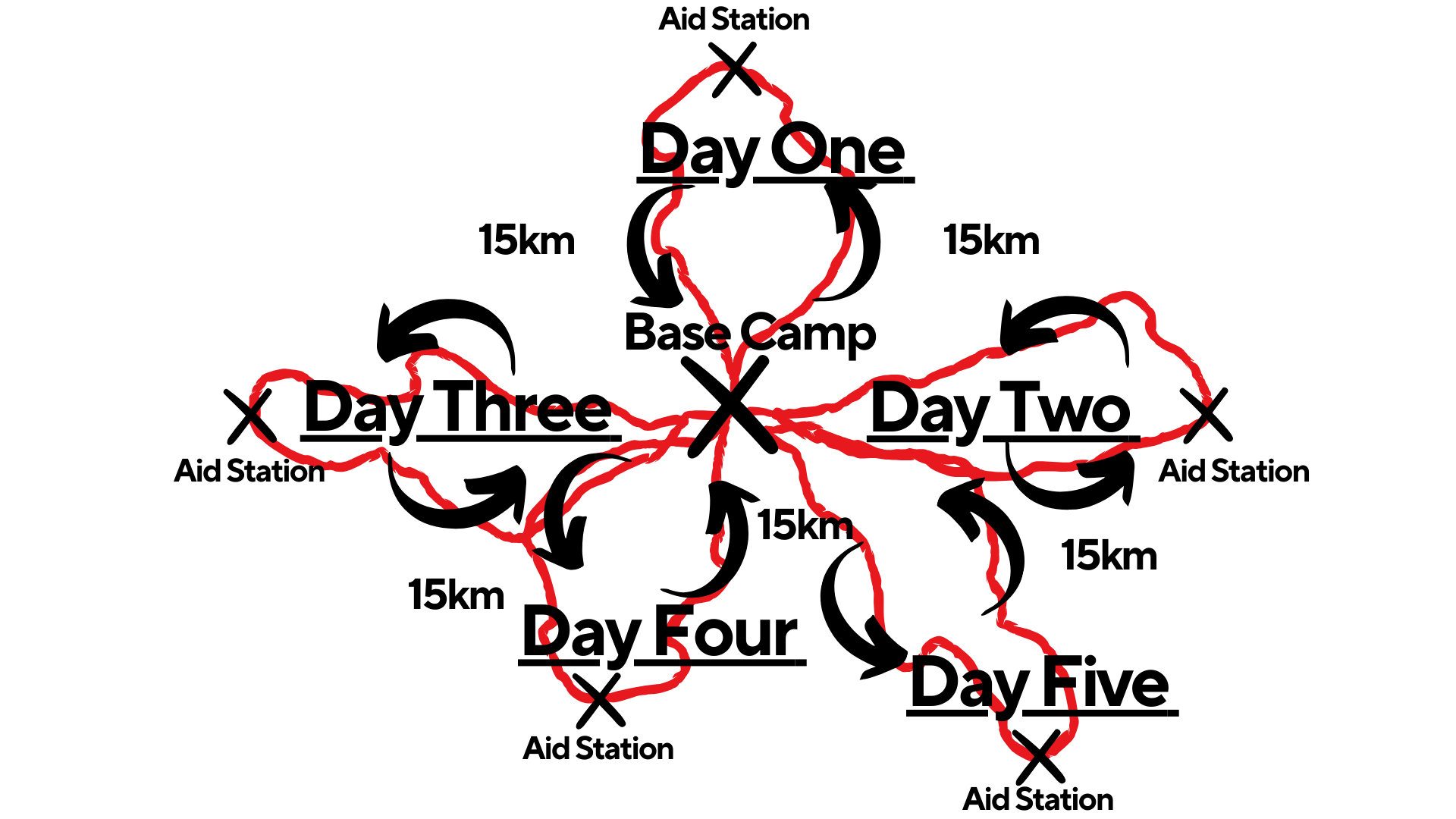
Specs + Prep
environmenT
The challenge of this race lies not so much in the distance to be run, but in the varied and extreme conditions we face while running.
Expect the terrain to be rugged, with temperatures that are hot by day and cold by night. We will run on tracks, trails, and through the bush; there will be deep sand, sharp thorns, and piercing sun.
It is good to remember that these are the conditions in which our species was originally forged, where the fittest primates — our ancestors — evolved the arched feet, achilles tendons, and sweat glands that allow us to outrun hoofed ungulates to this day.
There is no better place to put your humanity to the test.
vital stats:
Daytime avg. high: 34°C
Nighttime avg. low: 6°C
Shade: 10%
Humidity: 20%
Altitude: 1150m
Terrain: Sandy, ranging from loose to compact.
Vegetation: Bushy grass, scrub, sparse trees, and all manner of thorns.
Wildlife: Everything from gemsbok to giraffes, lions to elephants.


safety
We are committed to runner safety and have a team of local experts who will provide a mandatory survival training on-site for all participants during the three days leading up to the race, as well as emergency services in case of injury or illness during the event itself.
Inspired by the traditional manner of persistence hunting, we will run in small groups or “cohorts” in which all members will responsible for taking care of each other throughout the race. This is the best way to keep things simple and safe, and most respectful of local tradition - which cares very little about podiums and very much about group survival.
Each cohort will have at least one member with a GPS unit provided by the organization, and all members will have the tracks loaded in their watch or other device.
We have a variety of online training options for those looking to build more resilience in body and mind during the months leading up to the race. Registered participants will have free access to course material and have the option to join an online community to discuss all things race-related.
The best safety measure, by far, is to prepare yourself for running off-trail with limited resources; you don’t want to be dependent on 100g of sugar gels every 20 minutes or 2 liters of water per hour. There will be very few of the “normal” luxuries present in most other races, and the demands placed upon you will be extremely varied and often unpredictable.
In fact, we recommend that you don’t think of this as a race so much as an adventure or an experience; if you want to take a poetic turn, think of it as an exploration of all that we have been and all that we could be.


EXPERIENCE
Conditions are harsh, and survival can be a struggle for those who live here. This doesn’t mean that life is all drudgery and suffering; as any outsider immediately notices, the Ju/’hoan have an incredible capacity for joy, for laughter and play and dancing.
It’s quite common to spend all day hunting or gathering and then spend most of the night celebrating the days’ success.
We will join the Ju/’hoan in all aspects of life, and get a glimpse of not just how to survive as individuals, but how to thrive as a community, in much the same way our ancestors did for 99% of human history.
We arrive the morning of September 5 at the airport in Windhoek, Namibia; from there, we’ll drive to the Kalahari in 4x4 vehicles, leaving at 10:30am.
We will spend our time with the local community, getting acclimatized to the surroundings. We’ll learn the basics of survival in the Kalahari, including plant identification, animal tracking, and a variety of bushcraft skills that have been passed down through the generations over hundreds of thousands of years.
Preparation : Sept. 5-10
We run approx. 30km per day for 5 days, starting and ending each day at our base camp. Each stage will have one aid station with water, food and medical support at the 15km mark.
We have decided to limit daily distances in order to allow us plenty of time to share and learn from the locals, as well as to ensure safety for participants unfamiliar with desert conditions.
Exact routes will be adjusted last-minute to accommodate the movement of local animal populations and ensure runner safety. Exact GPS tracks will be provided 24h previous to the start of each stage.
The graphic below serves as a rough outline of our route:
rUN, sept. 10-14
Celebration, sept. 14-15
We dedicate the evening of the 14th to feasting and festivities, with an open invitation for locals to join us in celebration.
The morning of the 15th will be spent in gentle recovery, and then we’ll make our way back to the airport in Windhoek, arriving at approximately 7:00pm. You can choose to fly out the same evening or find your own accommodation in the city; there are many affordable options to choose from.


GEAR
This is the minimum gear that you must have with you at all times during the race:
-Carrying capacity 2 liters water
-500g of nutrition
-Clothing capable of reasonably protecting you from both sun and thorns
-GPS watch or equivalent system capable of loading daily tracks
-Headlamp, thermal base layer, and light jacket
-Reflective emergency blanket
-Backpack with adequate carrying capacity
Each runner should be as safe and self-sufficient as possible, while being aware that unnecessary gear can represent a significant burden in desert conditions. More is rarely better. You need to test yourself in the months and weeks leading up to the event in order to define your own personal needs for hydration, nutrition, and protection.
We will provide training for those who wish, as well as an online forum where all these matters can be discussed in greater depth.
We strongly encourage participants to come with carry-on baggage only. Not only will this eliminate problems with lost luggage and delays at the airport, there is simply no need to bring more gear than can fit in a medium-sized backpack. Hauling a suitcase full of gear you’ll never use through the hot sand is not fun, and forcing everyone else to wait for you while you do it, even less so.
If you want to check a bag on the way back so you can stock up on souvenirs that’s entirely up to you.
In addition to race gear, you should bring the following:
-Appropriate sleeping bag and warm clothes for night
-Biodegradable soap, sunscreen, and toothpaste
-Larger water bottle or bladder to keep with you at camp
-External battery system and/or solar charger with necessary cables for headlamp and GPS watch
-Towel
-First aid kid for personal use (cuts, blisters, etc.)
-Reusable bowl, cup, and utensils
-Any specific food, medicine, supplements, etc. you need to stay strong
-Pepper spray
-Safety whistle
-Pocket knife
-Magnetic compass and map of the region
Upon arrival we will supply each participant with essential safety gear, some of which cannot be brought with you on the plane:
We are working to secure sponsors who can give discounts on high-quality gear made ethically, and of sustainable materials. If you are interested in becoming a sponsor or know of a company working in a way that aligns with our principles, please let us know.


